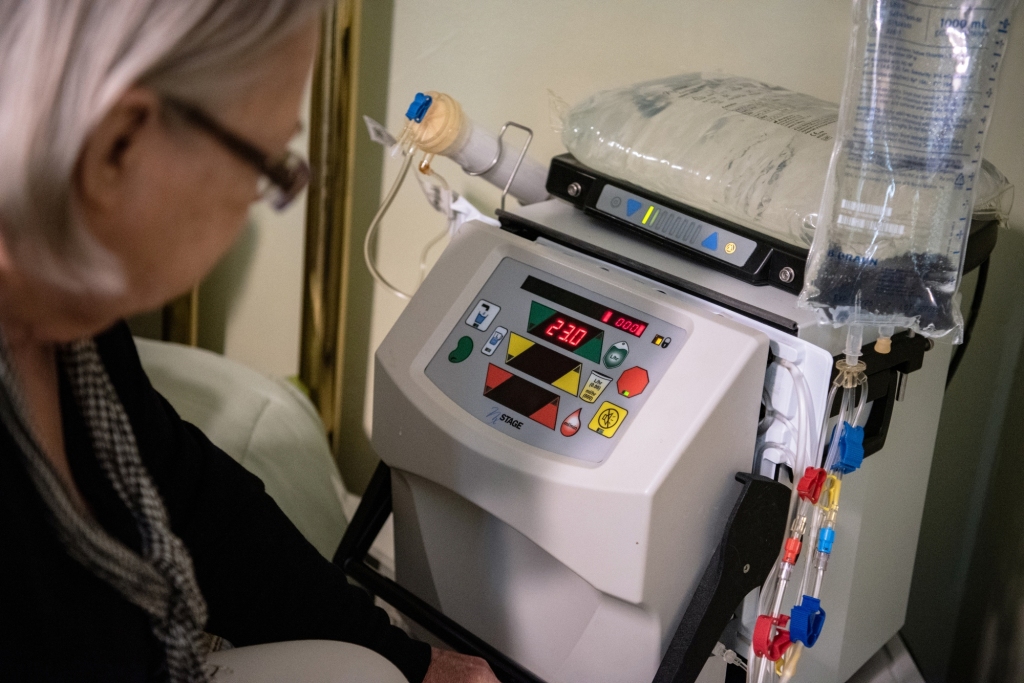A needle inserted into her arm had fallen loose, breaking a circuit that the machine used to clean her blood. It was still pumping, drawing and filtering blood as designed, but the blood was now spilling into her bed instead of returning to her body.
Gedney, a leader of the Home Dialyzors United support group, knew what to do. Armed with a decade of experience with hemodialysis, she calmly applied pressure to her arm and pressed a red button that turned off the pump. Her blood loss stopped. In the seconds her needle was loose, Gedney’s blood had soaked through her pajamas, bedsheets, and quilt.
“I sat up and looked down, and I was literally covered in blood,” said Gedney, 71. “It was a bloodbath.”
On that frightful night last year, Gedney survived a rare and very dangerous complication of hemodialysis — a venous needle dislodgment, or VND. About 500,000 Americans with kidney failure rely on hemodialysis to mimic the function of healthy kidneys by pumping their blood through an external cleaning machine. If the venous needle dislodges, the machine continues to pump and clean blood, but the blood escapes. The patient is methodically drained and, unless someone intervenes, can die in minutes.
By some estimates, at least one American is killed this way every week.
A relatively simple solution is available in Europe: An alarm detects blood loss with a disposable sensor patch, then automatically shuts off the dialysis pump. Dialysis companies in the United States have not embraced this fail-safe technology, so it is largely unavailable to Americans. The alarm costs $649 and each patch about $2.25. Neither is covered by Medicare, which insures most dialysis patients.
“That’s the ugly side of dialysis,” said Debbie…
Read the full article here







